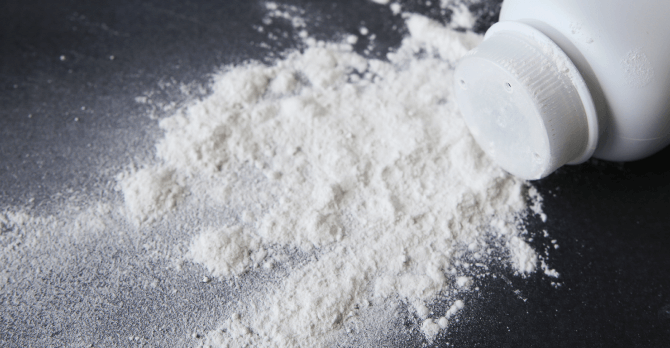Why should talcum powder be surface modified?

Talc is a hydrated magnesium silicate mineral with good electrical insulation, heat resistance, chemical stability, lubricity, oil absorption, hiding power and mechanical processing properties. It is widely used in cosmetics, paints, coatings, Papermaking, plastics, cables, ceramics, waterproof materials and other fields.
1. Why should talcum powder be surface modified?
Like other non-metallic mineral powder materials, the surface organic treatment of talc powder is necessary. This is due to the fact that the surface of talc powder contains hydrophilic groups and has a high surface energy. As an inorganic filler and an organic high polymer molecular material, there is a great difference in chemical structure and physical form. It lacks affinity and requires The talc powder particles are surface treated to improve the interfacial binding force between the talc powder and the polymer, and improve the uniform dispersion and compatibility of the talc powder particles and the polymer.
2. What are the surface modification methods of talc powder?
(1) Surface coverage modification method
The surface coating modification method is to cover the surface active agent or coupling agent on the surface of the particle, so that the surfactant or coupling agent is combined with the surface of the particle by adsorption or chemical bonding, so that the surface of the particle changes from hydrophilic to hydrophobic, giving the particle New properties that improve the compatibility of particles with polymers. This method is currently the most commonly used method.
(2) Mechanochemical method
The mechanochemical method is to make relatively large particles smaller by crushing, friction, etc., so that the surface activity of the particles increases, that is, to enhance their surface adsorption capacity, simplify the process, reduce costs, and make it easier to control the quality of the product . Ultrafine crushing is an important means of deep processing of materials, and its main purpose is to provide high-performance powder products for modern industry. This process is not a simple particle size reduction, it includes many complex powder material properties and structural changes, mechanochemical changes.
(3) Outer membrane layer modification method
The modification of the outer film layer is to uniformly coat a layer of polymer on the particle surface, thus endowing the particle surface with new properties.
(4) Partial active modification
Partially active modification uses chemical reactions to graft some groups or functional groups on the surface of particles that are compatible with polymers, so that inorganic particles and polymers have better compatibility, so as to achieve the purpose of compounding inorganic particles and polymers .
(5) High energy surface modification
High-energy surface modification is to use the huge energy generated by high-energy discharge, plasma rays, ultraviolet rays, etc. to modify the surface of particles to make the surface active and improve the compatibility between particles and polymers.
(6) Precipitation reaction modification
Precipitation reaction modification Utilizes precipitation reaction for modification. This method is to use the precipitation effect to coat the surface of the particles, so as to achieve the effect of modification.
3. What surface modifiers are commonly used in talcum powder?
(1) Titanate coupling agent
Modification method: The dry process is to stir and dry the talc powder in a high-speed mixer preheated to 100°C-110°C, and then add evenly measured titanate coupling agent (diluted with an appropriate amount of 15# white oil), Stir for a few minutes to obtain modified talc powder; the wet process is to dilute the titanate coupling agent with a certain amount of solvent, add a certain amount of talc powder, stir at 95°C for 30 minutes, filter and dry to obtain modified talc powder product.
(2) Aluminate coupling agent
Modification method: Dissolve an appropriate amount of aluminate (such as L2 type) in a solvent (such as liquid paraffin), add dried 1250-mesh fine talc powder and grind for 30 minutes to modify, and keep the temperature at 100°C for a period of time, and cool After that, the modified product is obtained.
(3) Silane coupling agent
Modification method: Make a solution of silane coupling agent (such as KH-570) and stir it evenly. Drop the solution into the dried talc powder, stir for 40-60 minutes to make the treatment agent fully cover the filler, and then heat and dry to obtain the modified talc powder.
(4) Phosphate
Modification method: first pre-coat the talcum powder in the aqueous solution of phosphoric acid ester at 80°C for 1 hour, then dry at about 95°C; finally raise the temperature to 125°C, and heat-treat for 1 hour. The dosage of phosphate is 0.5%-8% of talcum powder.
